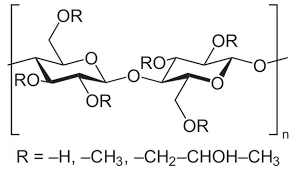
Oct . 19, 2024 06:44 Back to list
The Role of Hydroxypropyl Methyl Cellulose in Dietary Supplements and Health Products
Hydroxypropyl Methyl Cellulose in Supplements An Overview
In recent years, the dietary supplement industry has seen a surge in the popularity of various ingredients that can enhance the efficacy, stability, and usability of nutritional products. One such ingredient that has garnered attention is Hydroxypropyl Methyl Cellulose (HPMC). Known for its versatile applications, HPMC is a plant-derived polymer often utilized in the formulation of supplements, providing numerous benefits that cater to both manufacturers and consumers.
Hydroxypropyl Methyl Cellulose is a cellulose derivate derived from natural cellulose, often sourced from wood or cotton. With its unique chemical structure, HPMC is soluble in cold water, forming a clear viscous solution. This property is essential for various applications, especially in the supplement industry. HPMC offers a range of functionalities, such as acting as a thickener, emulsifier, stabilizer, and film-forming agent. Its multifunctionality makes it a valuable ingredient for supplement manufacturers aiming to enhance their product formulations.
One notable feature of HPMC is its role in vegetarian and vegan capsules. Traditionally, many capsules were made from gelatin, which is derived from animal products. As the demand for plant-based alternatives grows, HPMC has emerged as a leading candidate for capsule production. HPMC capsules offer a suitable alternative for those adhering to vegetarian or vegan diets, ensuring that they can consume supplements without compromising their principles. Furthermore, HPMC capsules are non-GMO and free from allergens, making them a preferred choice for consumers with specific dietary restrictions.
In addition to being a suitable encapsulating agent, HPMC plays a crucial role in controlled-release formulations. By modifying the viscosity and the gel-forming properties of the supplement, HPMC can help achieve a more gradual release of active ingredients into the body. This controlled release is particularly beneficial for supplements that contain nutrients or compounds requiring prolonged absorption for optimal efficacy. As a result, consumers may experience enhanced health benefits and improved bioavailability, making HPMC an essential component in modern supplement formulations.
hydroxypropyl methyl cellulose in supplements

Furthermore, HPMC assists in improving the stability and shelf-life of supplements. Many active ingredients are sensitive to moisture, light, and temperature, leading to degradation over time. The film-forming properties of HPMC can protect these sensitive compounds, thereby prolonging their potency and effectiveness. This stability enhancement is particularly significant for companies looking to ensure their products maintain their quality from production to consumption.
Beyond these functional benefits, HPMC is also recognized for its safety profile. It is classified as Generally Recognized as Safe (GRAS) by the U.S. Food and Drug Administration (FDA), which reassures consumers about its use in dietary supplements. The non-toxic nature of HPMC, combined with its high solubility and compatibility with various formulations, establishes it as a safe ingredient for widespread consumption.
The incorporation of Hydroxypropyl Methyl Cellulose in supplements is indeed a reflection of the industry’s shift towards innovation and consumer-centric products. Its multifunctional qualities not only meet the demands of manufacturers seeking to enhance product performance but also align with the preferences of health-conscious consumers. As the demand for nutrient-rich, safe, and effective dietary supplements continues to grow, HPMC’s relevance in this space is likely to expand further.
In conclusion, Hydroxypropyl Methyl Cellulose serves as a crucial ingredient in modern dietary supplements, offering a combination of safety, effectiveness, and versatility. Its appeal to both manufacturers and consumers stems from its ability to improve product formulation while accommodating varying dietary needs. As the supplement industry evolves, the role of HPMC is poised to become increasingly important in delivering high-quality, reliable nutritional products to a diverse audience.
-
The Widespread Application of Redispersible Powder in Construction and Building Materials
NewsMay.16,2025
-
The Widespread Application of Hpmc in the Detergent Industry
NewsMay.16,2025
-
The Main Applications of Hydroxyethyl Cellulose in Paints and Coatings
NewsMay.16,2025
-
Mortar Bonding Agent: the Key to Enhancing the Adhesion Between New and Old Mortar Layers and Between Mortar and Different Substrates
NewsMay.16,2025
-
HPMC: Application as a thickener and excipient
NewsMay.16,2025
-
Hec Cellulose Cellulose: Multi functional dispersants and high-efficiency thickeners
NewsMay.16,2025







